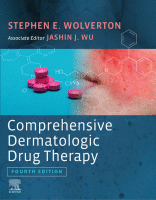Physical Address
304 North Cardinal St.
Dorchester Center, MA 02124

Questions Q62.1 Concerning various categories of liver disease, what percentage of patients likely have drug causation: (1) adults with hepatitis, (2) adults with hepatitis at least 50-years-old, (3) all patients with fulminant hepatitis? (Pg. 678, Table 62.1 ) Q62.2 What…

Questions Q61.1 Given the various conditions associated with erosive gingivitis, which conditions are best treated with (1) topical corticosteroids alone, (2) topical calcineurin inhibitors, (3) systemic corticosteroids or (4) other immunosuppressive therapies? (Pg. 666) Q61.2 What are some factors which…

Questions Q60.1 What are the major serotypes of botulinum, and what are the characteristics of botulinum neurotoxin A that make it most suitable for dermatologic use? (Pg. 657) Q60.2 What is the general mechanism by which botulinum toxin relaxes facial…

Questions Q59.1 Which fillers require allergy testing before injection? (Pgs. 651, 653) Q59.2 How does the ‘moldability’ of hyaluronic acid compare with that of calcium hydroxyapatite? (Pg. 651×2) Q59.3 Which fillers can be dissolved if there are undesirable effects? What…

Questions Q58.1 What are some significant differences between commonly used injectable local anesthetics, including properties such as amide versus ester, lipophilicity, etc.? (Pg. 632) Q58.2 What are the advantages and limitations of liposomal bupivacaine? (Pg. 632) Q58.3 What is the…

Questions Q57.1 What is the function of endogenous vitamin C, and by what mechanisms does topical vitamin C reportedly reduce clinical findings of photoaging? (Pg. 625) Q57.2 What are the clinical advantages of aluminum chloride used for hemostasis, compared with…

Questions Q56.1 What types of reactions are included under the term ‘contact dermatitis’? (Pg. 617) Q56.2 What is dermatitis medicamentosa? (Pg. 618) Q56.3 What are some clues that help suggest the presence of contact dermatitis? (Pg. 618) Q56.4 Of the…

Questions Q55.1 How do salicylic acid and α-hydroxy acids differ regarding lipid solubility and the resultant depth of percutaneous absorption? (Pg. 608) Q55.2 What are some of the mechanisms of salicylic acid leading to keratolytic and desmolytic effects? (Pg. 608)…

Questions Q54.1 What are the four main stages (and their general sequence) of wound healing? (Pg. 598) Q54.2 What are some of the most important medical conditions to exclude (and related laboratory tests) in patients with a chronic cutaneous ulcer?…

Questions Q53.1 What depth of peel is generated using superficial, intermediate, and deep chemical peels? What does frosting during a chemical peel indicate? (Pgs. 592, 593×2, Tables 53.1 and 53.2 ) Q53.2 Why does salicylic acid (SA) penetrate comedones better…